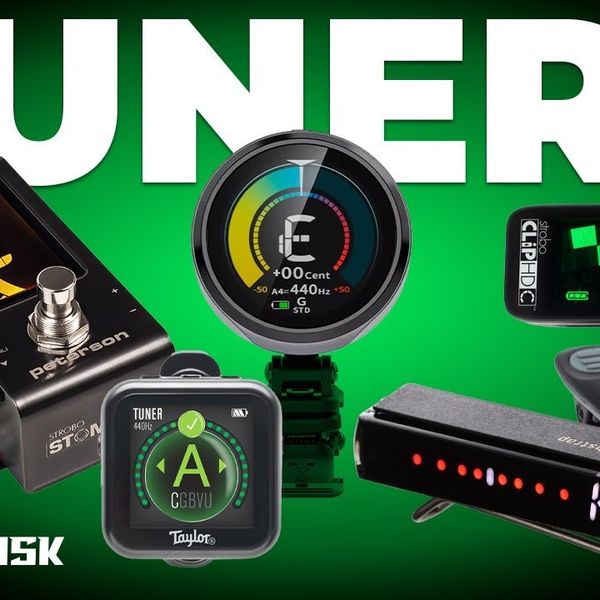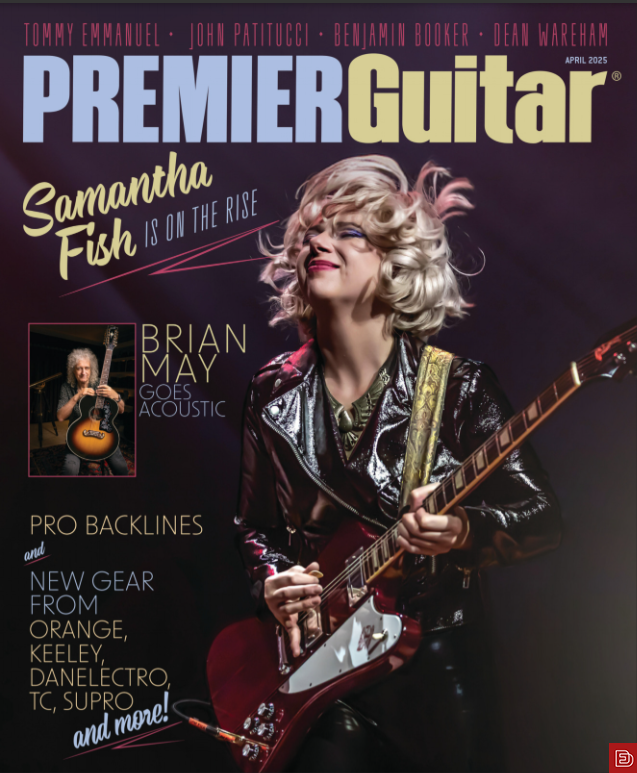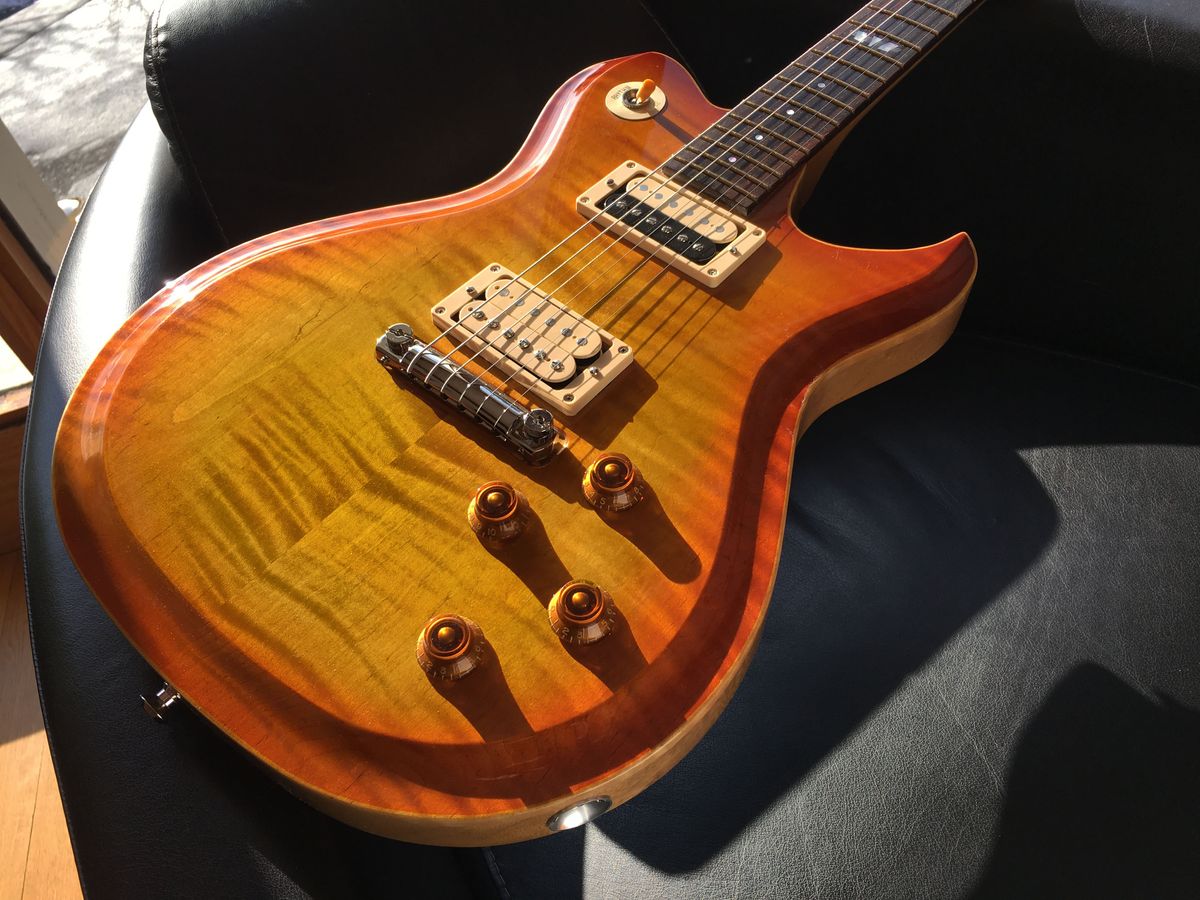
This guitar certainly sounds superb, and thanks to its fine tonewood ensemble—which consists of a korina neck and body, figured maple top, and Brazilian rosewood—it looks great, too.
When it comes to electric guitar materials, choose the wood that looks good.
Nothing raises the hackles of electric-guitar players like the subject of tonewoods. Maybe that’s why I like to talk about the subject. Unlike many, I enjoy being proven wrong, and believe me when I tell you that, despite my decades of experience, it happens on a regular basis. And despite what may appear to be factual science, there’s also something that can change one’s opinion on matters that don’t get discussed: The practical application of the matter at hand.
Of course, we can all agree on the importance of wood selection in the construction of acoustic instruments. Presumably, this is because there are no pickups involved. The difference between a Sitka spruce- and cedar-topped acoustic should be obvious to most ears. After all, there’s no electronic conversion happening there, it’s just the pure interaction of the wood and strings. On the other hand, when it comes to electric guitars, we’ve all witnessed the transformation that a great set of pickups can lend to a solidbody guitar. This allows us to focus on the nature of electric guitar tone, and where it actually comes from.
There have been endless discussions about how a particular pickup brand’s product has rescued someone’s lackluster guitar, turning it into their No. 1. The opposite is true as well. Either way, anecdotal evidence would suggest that tone comes from pickups. Tests have been devised to eliminate the wood of the electric guitar to prove that pickups alone are responsible for the frequency signature of steel strings. The test rig in question is the Dan Armstrong Lucite guitar. Unfortunately, the only pickups found in these guitars are—you guessed it—Dan Armstrong pickups. But I digress.
What I’m really driving at here is that I’ve come to the conclusion that tonewoods don’t matter. Not that they don’t change the sound of your guitar, but that they simply don’t matter, and that’s okay with me. There are so many elements to guitar tone (with no consensus on what is good, bad, better, or best) that wood simply doesn’t factor into it anymore.
“Tests have been devised to eliminate the wood of the electric guitar to prove that pickups alone are responsible for the frequency signature of steel strings.”
The fact is, many guitar makers assume that you are going to switch out the pickups regardless of what handwringing they do to select what goes into your guitar. This frees up builders to choose the least expensive path or lean heavily on name recognition when stocking their inventory. Or they can offer a smorgasbord of choices to their clients, allowing buyers to feel confident in their purchase. I chuckle at the hours of testing I’ve done to determine which recipe works with this or that model guitar, only to have the customer swap out the pickups anyway. This is, as a good friend of mine puts it, the buyer “putting their own stink on it.”
So, I think that we should look at wood selection for an electric guitar exactly like we would when purchasing (or commissioning) fine furniture. A dining room table works just fine regardless of what beautiful wood you select. It’s going to be the meals and the company of friends that you enjoy—the wood just enhances the mood. A handmade recliner will be just as comfy made from bubinga as it would be if fashioned from curly cherry. And so on. It’s the artistic expression of the builder and an aesthetic choice for the owner. It’s the exact same thing with a guitar.
So, it doesn’t matter if I tell you that a lightweight, chambered white limba guitar will have more air, or that a genuine mahogany will sound fatter. You are going to choose with the greatest, most important sensibility you have—your eyes. Then, after the honeymoon period is over, you can start swapping out pickups and finetuning the tone capacitors and bridge alloys.
You’d think that this might bother or disappoint builders, but I suggest that more of them just get over it and give the customer what they want, regardless of the why. In the end, this benefits everyone. Builders are relieved of the need to ear-test a zillion permutations of Strat, Jazzmaster, P-90, or PAF-style pickups and can focus on delivering a beautiful, well-crafted instrument that looks and plays great. So, there is my new take on the tonewoods and pickup debate. I was wrong, and still am. But at least I understand the new normal. And for those who still think wood makes tone, I’ll be here for you.
- Acoustic Soundboard: Why Guitar Builders Blend Tonewoods ›
- What Will Replace Classic Tonewoods? ›
- Paul Reed Smith Ends the Tonewood Debate ›
- In Defense of Maple, the Tonewood You Already Know - Premier Guitar ›
- Acoustic Guitar Tonewoods — Do They Matter? ›
- Acoustic Guitar Tonewoods — Do They Matter? - Premier Guitar ›
- A Fresh Look at Alternative-Material Electric Guitars - Premier Guitar ›
Well-designed pickups. Extremely comfortable contours. Smooth, playable neck.
Middle position could use a bit more mids. Price could scare off some.
$2,999
Ernie Ball Music Man StingRay II
A surprise 6-string collaboration with Cory Wong moves effortlessly between ’70s George Benson and Blink-182 tones.
Announced at the 2025 NAMM show, Cory Wong’s new collaboration with Ernie Ball Music Man scratched an itch—namely, the itch for a humbucker-loaded guitar that could appease Wong’s rock-and-R&B alter ego and serve as complement to his signature Fender Strat. Inspiration came from no further than a bandmate’s namesake instrument. Vulfpeck bassist Joe Dart has a line of signature model EBMM basses, one of which uses the classic StingRay bass body profile. So, when Wong went looking for something distinctive, he wondered if EBMM could create a 6-string guitar using the classic StingRay bass body and headstock profile.
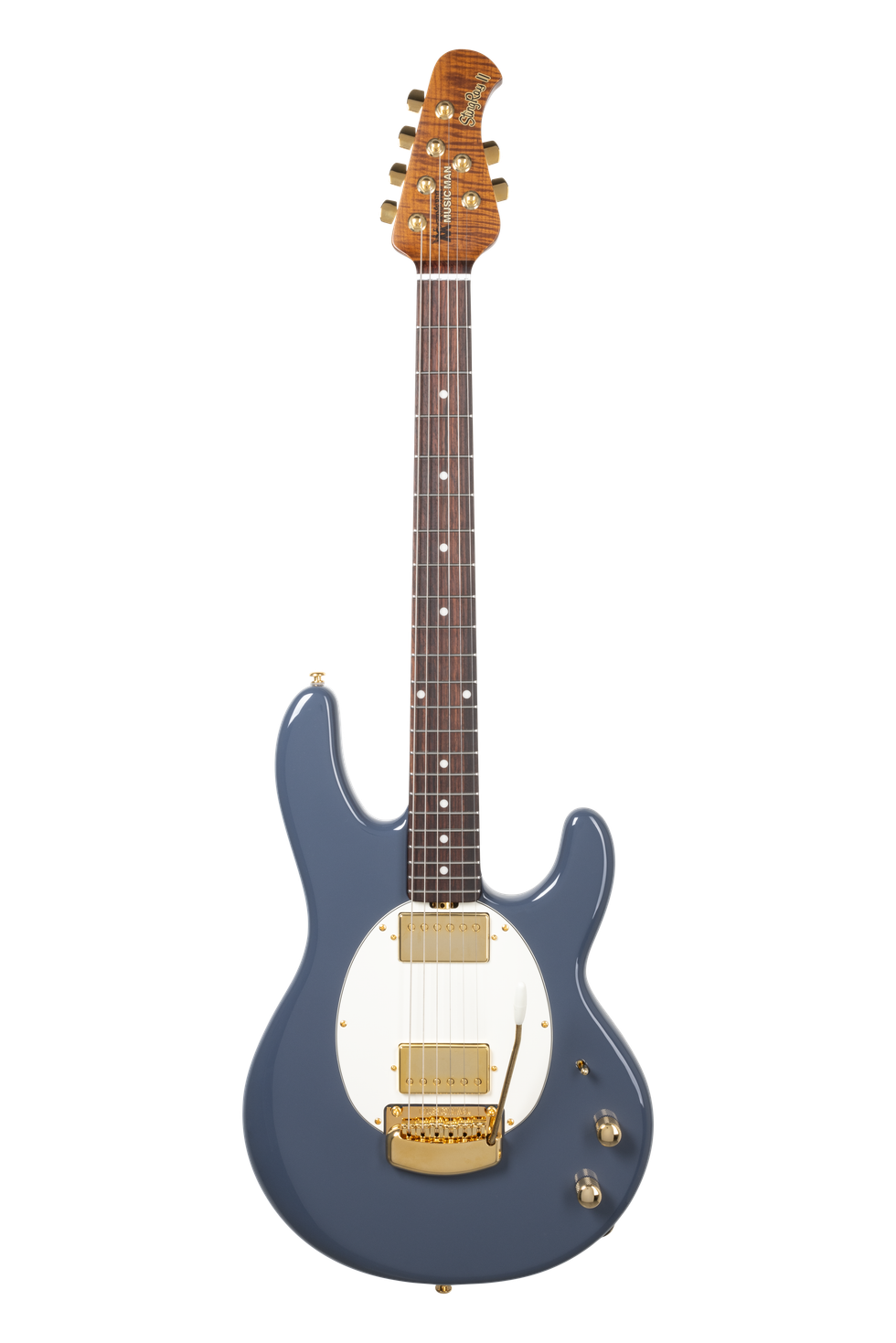 Ernie Ball Music Man StingRay II ReviewErnie Ball Music Man StingRay II Review
Ernie Ball Music Man StingRay II ReviewErnie Ball Music Man StingRay II ReviewDouble the Fun
Wong is, by his own admission, a single-coil devotee. That’s where the core of his sound lives and it feels like home to him. However, Wong is as inspired by classic Earth, Wind & Fire tones and the pop-punk of the early ’90s as he is by Prince and the Minneapolis funk that he grew up with. The StingRay II is a guitar that can cover all those bases.
Ernie Ball has a history of designing fast-feeling, comfortable necks. And I can’t remember ever struggling to move around an EBMM fretboard. The roasted maple C-shaped neck here is slightly thicker in profile than I expected, but still very comfortable. (I must also mention that the back of the neck has a dazzling, almost holographic look to the grain that morphs in the light). By any measure, the StingRay II’s curves seemed designed for comfort and speed. Now, let’s talk about those pickups.Hot or Not?
A few years ago EBMM introduced a line of HT (heat-treated) pickups. The pickups are built with technology the company used to develop their Cobalt and M-Series strings. A fair amount of the process is shrouded in secrecy and must be taken on faith, but EBMM says treating elements of the pickup with heat increases clarity and dynamic response.
To find out for myself, I plugged the StingRay II into a Fender Vibroverb, Mesa/Boogie Mark VII, and a Neural DSP Quad Cortex (Wong’s preferred live rig). Right away, it was easy to hear the tight low end and warm highs. Often, I feel like the low end from neck humbuckers can feel too loose or lack definition. Neither was the case here. The HT pickup is beautifully balanced with a bounce that’s rich with ES-335 vibes. Clean tones are punchy and bright—especially with the Vibroverb—and dirty tones have more room for air. Individual notes were clear and articulate, too.
Any guitar associated with Wong needs a strong middle-position or combined pickup tone, and the StingRay II delivers. I never felt any significant signal loss in the blended signal from the two humbuckers, even if I could use a bit more midrange presence in the voicing. The midrange gap is nothing an EQ or Tube Screamer couldn’t fix, though. And not surprisingly, very Strat-like sounds were easy to achieve for having less midrange bump.
Knowing Wong’s love for ’90s alt-rock, I expected the bridge pickup to have real bite, and it does, demonstrating exceptional dynamic range and exceptional high-end response that never approached shrill. Nearly every type of distortion and overdrive I threw at it sounded great, but especially anything with a scooped-mid flavor and plenty of low end.
The Verdict
By any measure, the StingRay II is a top-notch, professional instrument. The fit and finish are immaculate and the feel of the neck makes me wonder if EBMM stashes some kind of secret sandpaper, because I don’t think I’ve ever felt a smoother, more playable neck. Kudos are also due to EBMM and Wong for finding an instrument that can move between ’70s George Benson tones and the hammering power chords of ’90s Blink-182. Admittedly, the nearly $3K price could give some players pause, but considering the overall quality of the instrument, it’s not out of line. Wong’s involvement and search for distinct sounds makes the StingRay II more than a tired redux of a classic model—an admirable accomplishment considering EBMM’s long and storied history.
Ernie Ball Music Man StingRay II Cory Wong Signature Electric Guitar - Charcoal Blue with Rosewood Fingerboard
StingRay II Cory Wong - Charcoal Blue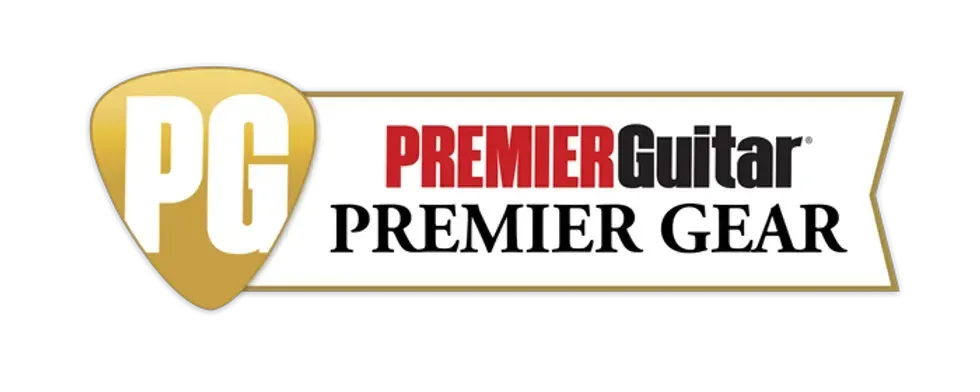
Adding to the company’s line of premium guitar strapsand accessories, Fairfield Guitar Co. has introduced a new deluxe leather strapdesigned in collaboration with Angela Petrilli.
Based in Los Angeles, Petrilli is well-known to guitar enthusiasts around the world for her online videos. She is one of the video hosts at Norman’s Rare Guitars and has her own YouTube lesson series, the Riff Rundown. She also writes, records and performs with her original band, Angela Petrilli & The Players, and has worked with Gibson, Fender, Martin Guitars, Universal Audio, Guitar Center and Fishman Transducers.
Angela Petrilli's eye-grabbing signature strap is fully hand cut, four inches wide and lightly padded, so it evenly distributes the weight of the instrument on the shoulder and offers superb comfort during extended play. The front side features black "cracked" leather with turquoise triple stitching. The "cracked" treatment on the leather highlights the beautiful natural marks and grain pattern – and it only gets better with age and use.The strap’s back side is black suede for adhesion and added comfort, with the Fairfield Guitar Co. logo and Angela's name stamped in silver foil.
Features include:
- 100% made in the USA
- Hand cut 4” wide leather strap with light padding -- offering extra comfort for longgigs and rehearsals.
- Black suede back side avoids slipping, maintains guitar’s ideal playing position.
- Length is fully adjustable from 45” - 54” and the strap has two holes on thetailpiece for added versatility.
The Fairfield Guitar Co. Angela Petrilli signature strap is available for $150 online at fairfieldguitarco.com.
Tube Amp Doctor has reissued one of the company’s mostsought-after products: the TAD 6L6WGC-STR Blackplate™ small bottle power tube is back inproduction after a 5-year absence.
The TAD 6L6WGC-STR Blackplate™ is the tube that has made TAD so popular with boutiqueamp manufacturers and vintage tone enthusiasts since 2003. A direct replacement for 6L6 and5881 tubes, it’s a remake of the small bottle GE6L6GC and has the same warm lower midrangeand silky top end as the classic GE versions of the 1950s and 1960s. Like the historic RCA5881, this tube features exclusive Blackplate anodes and a side getter.
The TAD 6L6GC-STR Blackplate™ and the TAD 6L6WGC-STR Blackplate™ feature TAD’sexclusive black-plate designs, gold grid wire, double getter construction, no-noise filaments and1.2mm thick heavy duty glass. This tube is approximately 80mm high (without pins) and canreplace 5881 and 6L6WGB tubes.
The newly reissued tubes feature the original design and raw materials from old stock, availablein limited quantities as long as the old stock raw materials are available. They’re the perfectchoice for vintage tweed and black panel amps such as the 1960 Bassman, Twin, Showman orSuper Reverb. The complex midrange and sweet heights are a class of its own. The TAD6L6WGC-STR is recommended for classic tone with warm cleans and rich, sweet mids whenpushed – and it’s great for fat jazz or blues tones.
- Delivers classic sound of the 1950s and ‘60s - excellent tone, maximum lifespan
- Tube Type: 6L6/5881
- Socket: 8 Pin(Octal)
- Identical construction, even tighter tolerances with improved production quality
The TAD 6L6GC-STR Blackplate™ and the TAD 6L6WGC-STR Blackplate™ are each priced at$48 (does not include VAT) / €46.50 (includes VAT) and are available at tubeampdoctor.com.
In challenging times, sometimes elemental music, like the late Jessie Mae Hemphill’s raucous Mississippi hill country blues, is the best salve. It reminds us of what’s truly essential––musically, culturally, and emotionally. And provides a restorative and safe place, where we can open up, listen, and experience without judgement. And smile.
I’ve been prowling the backroads, juke joints, urban canyons, and VFW halls for more than 40 years, in search of the rawest, most powerful and authentic American music. And among the many things I’ve learned is that what’s more interesting than the music itself is the people who make it.
One of the most interesting people I’ve met is the late Jessie Mae Hemphill. By the time my wife, Laurie Hoffma, and I met Jessie Mae, on a visit to her trailer in Senatobia, Mississippi, she’d had a stroke and retired from performing, but we’d been fortunate to see her years before at the New Orleans Jazz & Heritage festival, where she brought a blues style that was like quiet thunder, rumbling with portent and joy and ache, and all the other stuff that makes us human, sung to her own droning, rocking accompaniment on an old Gibson ES-120T.
To say she was from a musical family is an understatement. Her grandfather, Sid, was twice recorded by Alan Lomax for the Library of Congress. While Sid played fiddle, banjo, guitar, harmonica, keyboards, and more, he was best known as the leader of a fife-and-drum band that made music that spilled directly from Africa’s main artery. Sid was Jessie Mae’s teacher, and she learned well. In fact, you can see her leading her own fife-and-drum group in Robert Mugge’s wonderful documentary Deep Blues(with the late musician and journalist Robert Palmer as on-screen narrator), where she also performs a mournful-but-hypnotic song about betrayal—solo, on guitar—in Junior Kimbrough’s juke joint.
That movie, a 1982 episode of Mr. Rogers’ Neighborhood (on YouTube) where she appears as part of Othar Turner’s Gravel Springs fife-and-drum band, and worldwide festival appearances are as close as Jessie Mae ever got to fame, although that was enough to make her important and influential to Bonnie Raitt, Cat Power, and others. And she made two exceptional albums during her lifetime: 1981’s She-Wolf and 1990’s Feelin’ Good. If you’re unfamiliar with North Mississippi blues, their sound will be a revelation. The style, as Jessie Mae essayed it, is a droning, hypnotic joy that bumps along like a freight train full of happily rattling box cars populated by carefree hobos. Often the songs ride on one chord, but that chord is the only one that’s needed to put the music’s joy and conviction across. Feelin’ Good, in particular, is essential Jessie Mae. Even the songs about heartbreak, like “Go Back To Your Used To Be” and “Shame on You,” have a propulsion dappled with little bends and other 6-string inflections that wrap the listener in a hypnotic web. Listening to Feelin’ Good, it’s easy to disappear in the music and to have all your troubles vanish as well—for at least as long as its 14 songs last.“She made it clear that she had a gun—a .44 with a pearl handle that took up the entire length of her handbag.”
The challenge I’ve long issued to people unfamiliar with Jessie Mae’s music is: “Listen to Feelin’ Good and then tell me if you’re not feeling happier, more cheerful, and relaxed.” It truly does, as the old cliché would have it, make your backbone slip and your troubles along with it. Especially uptempo songs like the scrappy title track and the charging “Streamline Train.” There’s also an appealing live 1984 performance of the latter on YouTube, with Jessie Mae decked out in leopard-print pants and vest, playing a tambourine wedged onto her left high-heel shoe––one of her stylish signatures.
Jessie Mae was a complex person, caught between the old-school dilemma of playing “the Devil’s music” and yearning for a spiritual life, sweet as pecan pie with extra molasses but quick to turn mean at any perceived slight. She also spent much of her later years in poverty, in a small trailer with a hole in the floor where mice and other critters got in. And she was as mistrustful of strangers as she was warm once she accepted you into her heart. But watch your step before she did. On our first visit to her home, she made it clear that she had a gun—a .44 with a pearl handle that took up the entire length of her handbag and would make Dirty Harry envious.
Happily, she took us into her heart and we took her into ours, helping as much as we could and talking often. She was inspiring, and I wrote a song about her, and even got to perform it for her in her trailer, which was just a little terrifying, since I knew she would not hold back her criticism if she didn't like it. Instead, she giggled like a kid and blushed, and asked if I’d write one more verse about the artifacts she’d gathered while touring around the world.
Jessie Mae died in 2006, at age 82, and, as happens when every great folk artist dies, we lost many songs and stories, and the wisdom of her experience. But you can still get a whiff of all that––if you listen to Feelin’ Good.

